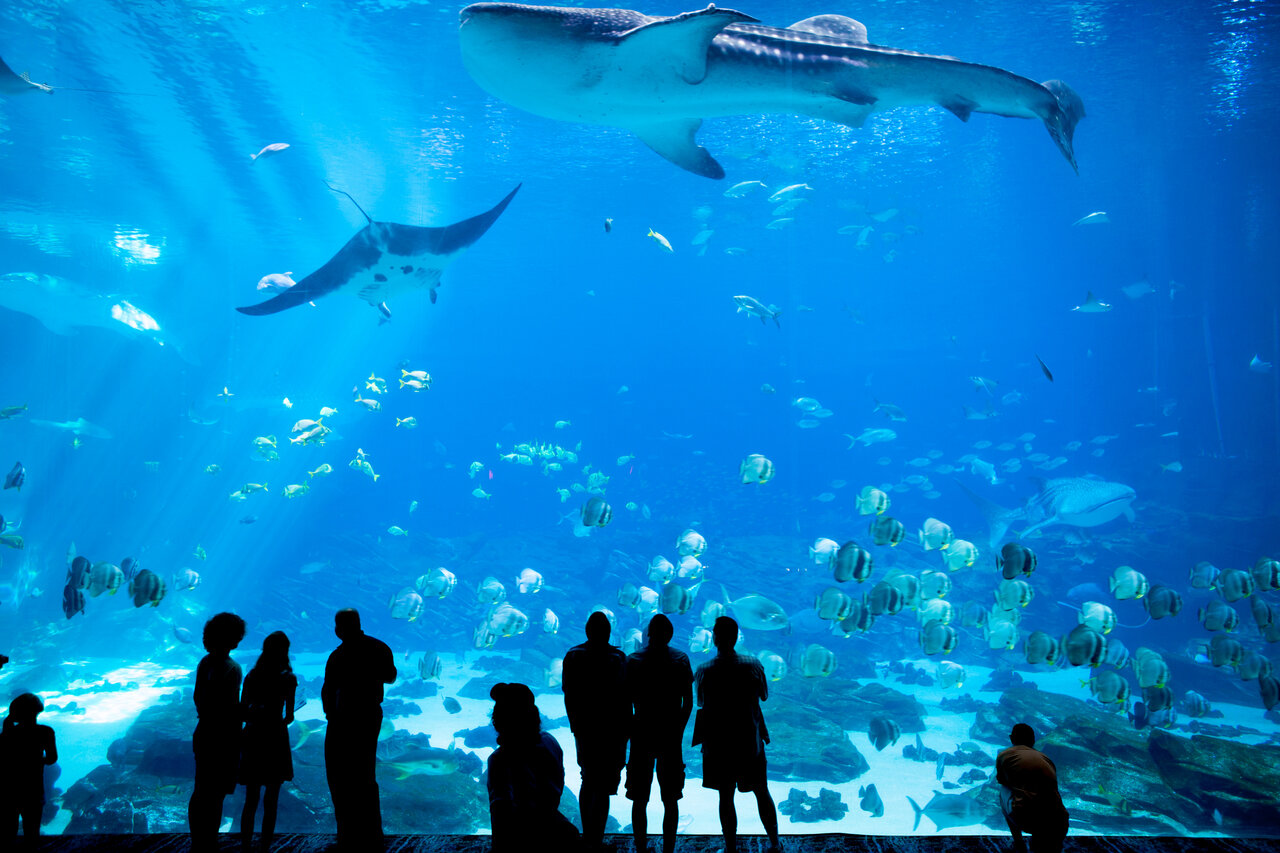By Katrina McDowell on August 19, 2024 in News

Aquariums, often a topic of debate among some, are more than just attractions. Did you know that most aquariums are nonprofit organizations firmly committed to conservation and sustainability? This summer, let’s dive into the world of America’s top aquariums and discover the incredible work they do.
Georgia Aquarium, Atlanta. This aquarium, the largest in the Western Hemisphere, is not just a home to the majestic whale sharks but also a hub of groundbreaking research. Since 2004, the aquarium has been studying whale sharks in the wild, an unparalleled research opportunity. The DNA studies conducted by scientists at the Georgia Institute of Technology, based on tissue samples collected from the animals at the aquarium, have led to the first-ever complete shark genome map. In addition to whale sharks, the Georgia Aquarium is a leader in conservation efforts for endangered species, sharing the experience and knowledge from innovative strategies to effective on-the-ground action.
Former president and CEO of Georgia Aquarium, Dr. Brian Davis, said, “Georgia Aquarium has been at the forefront of aquatic science for years, making important breakthroughs for marquee marine species. Our commitment to protecting our ocean is unwavering.”
Monterey Bay Aquarium, California. This gorgeous aquarium is known for its 28-foot-tall Kelp Forest, one of the tallest aquarium exhibits in the world! In addition to the Kelp Forest, Monterey Bay offers tufted puffins, sea otters, and deep-sea animals, including transparent glowing jellyfish. As far as sustainability is concerned, Monterey Bay Aquarium is committed to reducing sources of ocean plastic pollution. It practices what it preaches by ensuring all its retail operations and the products it sells align with its mission. By the end of 2024, the aquarium is working toward its apparel made from synthetic blends. Plush toys are all made with 100% recycled materials. And at the end of 2023, they eliminated 100% of hard plastic toys and gift products.
National Aquarium, Baltimore. The National Aquarium attracts over 1 million visitors annually to view its more than 20,000 aquatic animals, including an interactive and fully immersive dolphin show. However, such a large, resource-heavy production takes a lot of energy. The institution has committed to reducing its greenhouse gas emission to net zero by 2035, including some activities such as tree-planting projects to help address climate change.
Laura Bankey, the aquarium vice president of conservation programs, says, “We feel it’s important as a leader in the industry and as a leader in Baltimore to show people that it can be done and must be done. Going all in on climate means every decision that we make in the future has to use climate change as a filter.”
Shedd Aquarium, Chicago. This aquarium aims to promote compassion for animals and conservation efforts with an up-close view of an array of aquatic animals, including giant Pacific octopuses. They also offer a conservation eco-tour in the summertime with guided kayaking outings on the Chicago River. Shedd Aquarium is also committed to supporting sustainable fisheries to benefit the ecosystem and all that rely on them. Shedd also grows organisms like zooplankton at the bottom of the food chain through a live foods program. Live foods reduce the need to source food from the ocean and decrease the packing waste and carbon footprint generated from shipping food. Shedd Aquarium just welcomed its newest baby, a Beluga whale, last month, the firstborn since 2020. Births at aquariums like Shedd provide invaluable insights for scientists and conservationists alike.
Tennessee Aquarium, Chattanooga. Visitors to this top Chattanooga attraction embark on an underwater adventure from the mountains to the sea. This unique aquarium is divided into two buildings for freshwater and saltwater exhibits. The aquarium conducts several scientific studies by restoring the region’s natural ecosystems and educating the public to take conservation action. With its riverfront facility, the aquarium is growing its capacity to actively protect the health of the river water and the fantastic, diverse animals. A living laboratory, training ground and educational center, its conservation hub is a place that adds to everyone’s river story for generations to come. In fact, the southeast is home to the highest diversity of freshwater animals in North America.
So, get out there and fully immerse yourself in the underwater world and enjoy these aquariums’ myriad unique offerings.


